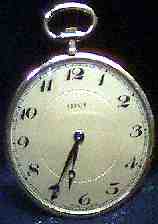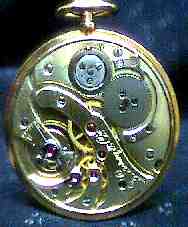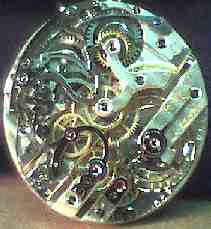Front and back plates of the movement. It has two Maltese cross, one per barrel. They're still at their place, even if too often watchmakers tend to eliminate them!
The case-back has a very fine engraving, representing piazza S. Marco in Venice. The quality of the detail is simply amazing. Enlarging the image the wonderful work of the engraver can be fully appreciated. This is a high grade "Le Roy" pocket watch. There is much confusion about Le Roy watches: this is a very common name in France and many firms used it. From the end of 18th Century up to the beginning of 20th Century many watches have been produced by a lot of different makers using this name or some of its variations. Quality varied too. Anyway, the "first" Le Roy was Julien (1686-1759) whose workshop definitely closed about in 1783, after a few years under the direction of his son Pierre. Every later maker nothing has to share with the first Le Roy.


Jumping hours pocket watch. This particular movement required the remaking of many springs in the jumping mechanism, damaged during previous reparations.

A curious movement: this Westminster chime clock plays hours at every quarter, not only once every sixty minutes. The hour mainspring barrel is extremely large: it cannot be contained in the plate profile. Strike train pivots were badly worn prior to repair because this clock plays 11,088 blows per week!
Click on image to see a larger picture.